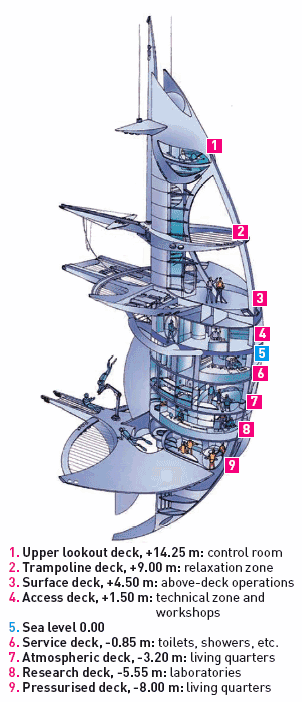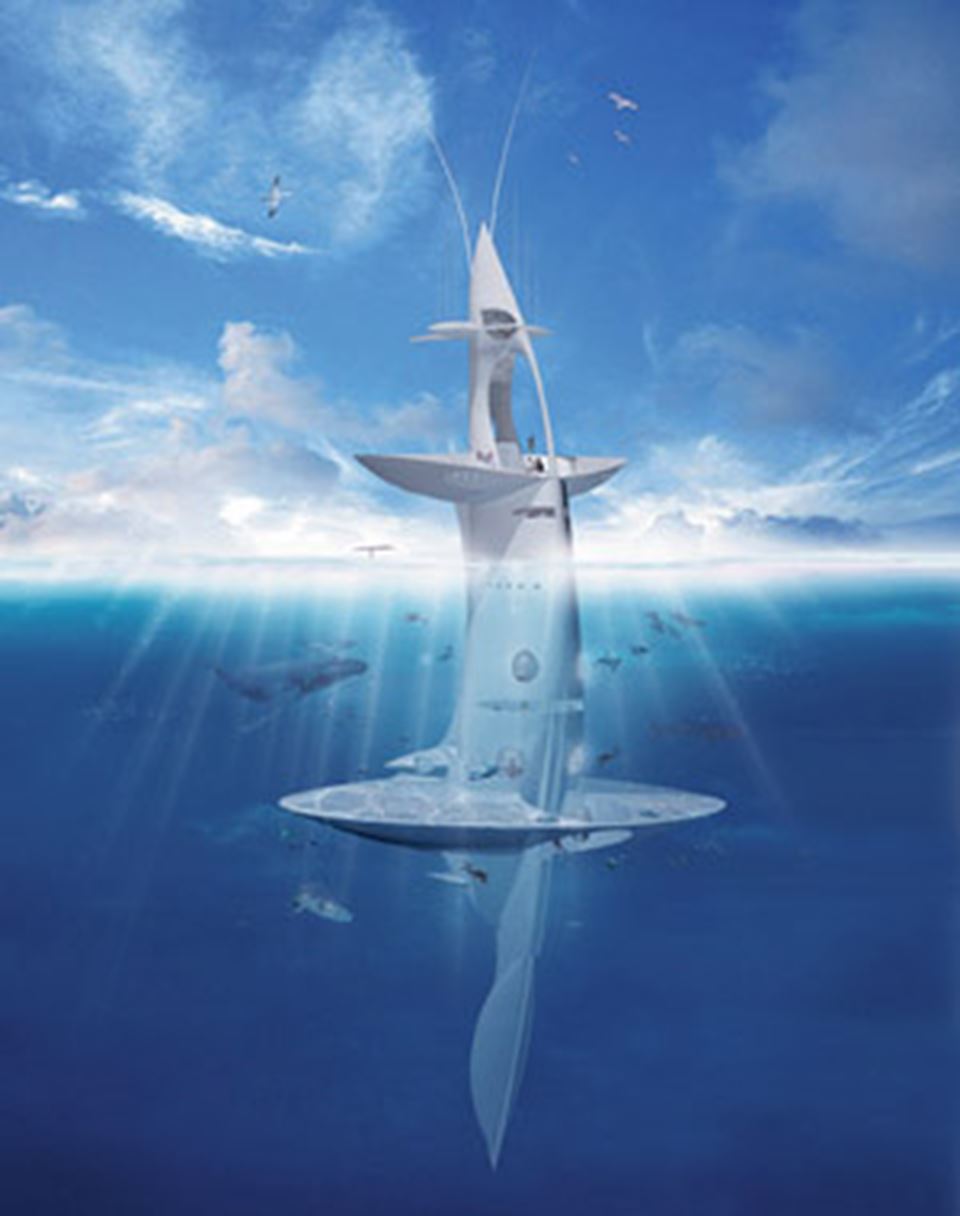This unique creation known as the “Sea Orbiter” has been designed by the famous French architect Jacques Rougerie. The design suggests the fantastic world of Jules Verne, and in fact a three-metre high model of the vehicle, built by MARINTEK in Trondheim, has actually been sent to the Jules Verne Exhibition in Paris.
MARINTEK marketing manager Kjell Holden, who was at the exhibition’s opening at the end of May 2005, said the event attracted thousands of people, and that he hoped the presence of MARINTEK and SINTEF made a good impression.
IMPROVED STABILITY
The real vessel will be 51 metres high, with a beam of 10-15 m. About two-thirds of it will be underwater, and that part will contain various types of laboratories for studies of the climate, and marine life and resources.
MARINTEK has built a model of the “Sea Orbiter” vessel and has tested it in the Ocean Basin at the Institute.
“It is essential to have a really stable platform, since people will be working and spending a lot of time there. It is important to develop a platform where the crew will not be seasick from lots of small movements and accelerations,” said Holden.
During the Ocean Basin tests changes were made in the size of the fins that protrude from the hull of the craft and small “thruster” propellers were also tested to reduce the movements.
“We managed to improve the movement of the platform in wave height of 7-10 metres to a level that would make it acceptable to stay aboard for longer periods” Holden said.
The upper part of the Sea Orbiter will be a scientific station for studies of the climate and changes in water and the atmosphere. The station will make wave measurements and calibrate the precise position of satellite trajectories. The underwater part of the new vessel will be equipped with a fish-collection system for studies of the pelagic ecosystem, plankton biodiversity and fish stocks.

Illustration: Jacques Rougerie
The unique vessel will take two years to cross the seas, and will provide a number of new ways of making continuous observations. For the 16 member crew who will live on board during cruises, it will be a trial just to live in such a confined space, with so many other people. The challenges involved will be akin to living on board the space shuttle.
Many people have also stressed the international aspects of the project, which includes collaboration with scientists and other experts from all over the world. It is also hoped that sheer adventure offered by cruises such as these will awaken curiosity about the ocean in the younger generation.
SPACE RESEARCH
Both NASA and ESA are interested in taking part in the project, since it will be possible to enter the sea from the lowest part of the vessel. Tasks such as turning bolts and replacing modules underwater while wearing neutral buoyancy diving suits is much like moving around in space, and is good training for astronauts.Working in neutral buoyancy, whether in a vacuum or water, means that you are weightless.
Holden says that training astronauts underwater is not a new idea. NASA has training bases outside Florida, and Scott Carpenter – one of the first US astronauts – is on the Sea Orbiter team. Carpenter was the first, in 1964, to promote the idea of astronaut training underwater. In the early 1990s MARINTEK also sought to use its own Ocean Basin as a space research laboratory. SINTEF health researchers were also involved at with plans for temperature studies and isolation rooms.
NEW POSSIBILITIES
“For us at MARINTEK, the project is interesting, visionary and important for the exploration of the oceans.We have learned a great deal and made many good international contacts in several industries.We are being brought into a network of contacts with interesting possibilities” says Holden, who is already involved in new plans with architect Jacques Rougerie.
By: ÅSE DRAGLAND
The post Á la Jules Verne appeared first on Geminiresearchnews.com.

